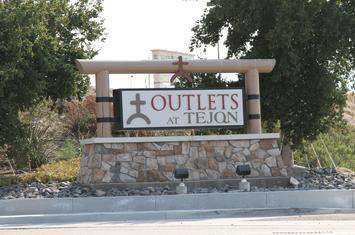
I was included in an e-mail thread last week about a 19,000 unit master planned community on the far edge of Los Angeles County. There’s an on-going debate about whether this is part of California’s housing solution or part of the problem. Centennial is one of three proposed residential developments at Tejon Ranch. It hugs the border of Kern County thirty miles outside of Bakersfield and three mountain ranges from LA proper. After a couple of decades of negotiations it was finally approved by the authorities.
The typical objections from the usual suspects (loss of wildlife habitat, paving over productive agriculture, concerns over water availability, traffic congestion, “Think of the children!”) will slow down the project, but not stop it. Grading of the site should begin very soon while the usual lawsuits begin to roll in. It’s all part of the master plan. Administrative friction, cultural resistance, and litigation are already baked in to the price of each proposed unit. One of the reasons new developments are often of this massive scale is that smaller organizations tend to exsanguinate before they can get anything built – or die shortly after a project is completed.







The theory is that Tejon Ranch already has a nascent industrial and commercial core along the highway and residential subdivisions will help create a well rounded and complete town. Live. Work. Play. That’s the theory. At around $500,000 each new home here will be significantly below the median price of comparable homes in greater LA. And LA is starved for affordable homes, particularly fully detached homes suitable for families with young children. Supporters compare Tejon Ranch favorably to prosperous and fashionable Irvine in Orange County. Detractors suggest it’s more like the distant outskirts of just-scraping-by San Bernardino. And “affordable” means different things to different people.





I have family and friends in the Antelope Valley. Towns like Palmdale and Lancaster are currently among the farthest suburban outposts of LA and these municipalities are still desperate to attract more growth and new development. There’s plenty of vacant land that’s already supplied with infrastructure and been pre-approved for new homes. The Antelope Valley has hospitals and government centers as well as long established retail and entertainment facilities. I won’t argue that any of these places rival Paris (or even Van Nuys) in terms of culture and economic dynamism. But the bones are there to absorb another 19,000 homes with no trouble. And at the risk of setting off dog whistles left, right, and center (I’m agnostic on the topic) there will be a California High Speed Rail station in Palmdale if that project ever materializes.
However, at the moment there just isn’t enough market demand in the area relative to the cost of construction. A new home that sells for $300,000 (the very low end in the region) results in a net profit of about $2,000 for the developer. Given the risk of a market correction once the homes are complete, why bother? And in spite of relentless subsidies and incentives there are too few jobs for the present population so workers endure long commutes to more populated areas.







Tejon Ranch is considerably farther from civilization compared to the Antelope Valley. These locations work well for telecommuters, retirees, people with mobile occupations like truck drivers, and people with an independent source of income. But those folks can live anywhere. Nevada and Arizona have less expensive real estate, lower taxes, and they’re only marginally farther away from LA if you compare a long slow drive to a cheap quick flight. There are over 10,000,000 inhabitants in Los Angeles County and over 23,000,000 in the larger Southern California conglomeration. I’m sure there are 19,000 warm bodies with the wherewithal to buy a $500,000 home in Tejon. And maybe they will… Fine by me.




Here’s the big picture. Los Angeles has a problem that it doesn’t want to solve. A majority of the population likes things the way they are. Infill development is a threat to the nostalgic suburban dream of Southern California life of open space, back yard barbecues, and carefree easy motoring. I understand their wish to preserve that way of life, particularly if they can continue to enjoy the benefits of the status quo while shifting the consequences on to others. Shrug. But another significant portion of the population desperately wants a more urban environment with an emphasis on less travel time, more activity within the immediate community, and ready access to opportunity. Lots of people are willing to accept a smaller home in exchange for a vibrant walkable neighborhood close to jobs and culture. They’d even give up the private garden if there were great public parks nearby. But building good new urbanism is in direct conflict with the old Dream. Centennial at Tejon Ranch is one response to the stalemate. We’ll see how it goes.
This piece originally appeared on Granola Shotgun.
John Sanphillippo lives in San Francisco and blogs about urbanism, adaptation, and resilience at granolashotgun.com. He's a member of the Congress for New Urbanism, films videos for faircompanies.com, and is a regular contributor to Strongtowns.org. He earns his living by buying, renovating, and renting undervalued properties in places that have good long term prospects. He is a graduate of Rutgers University.












